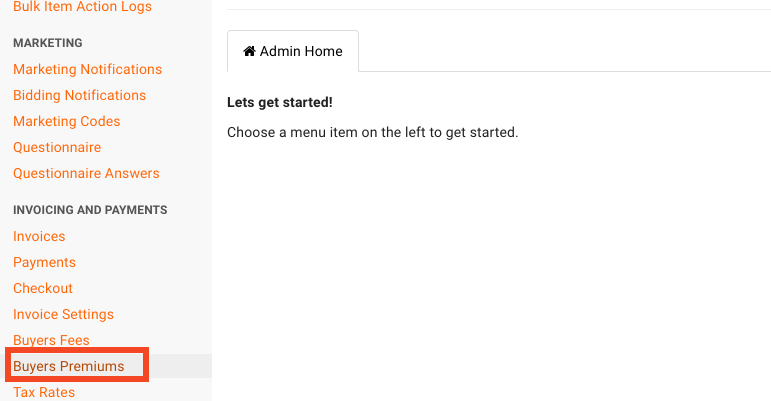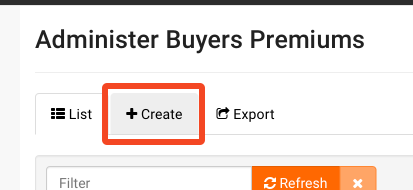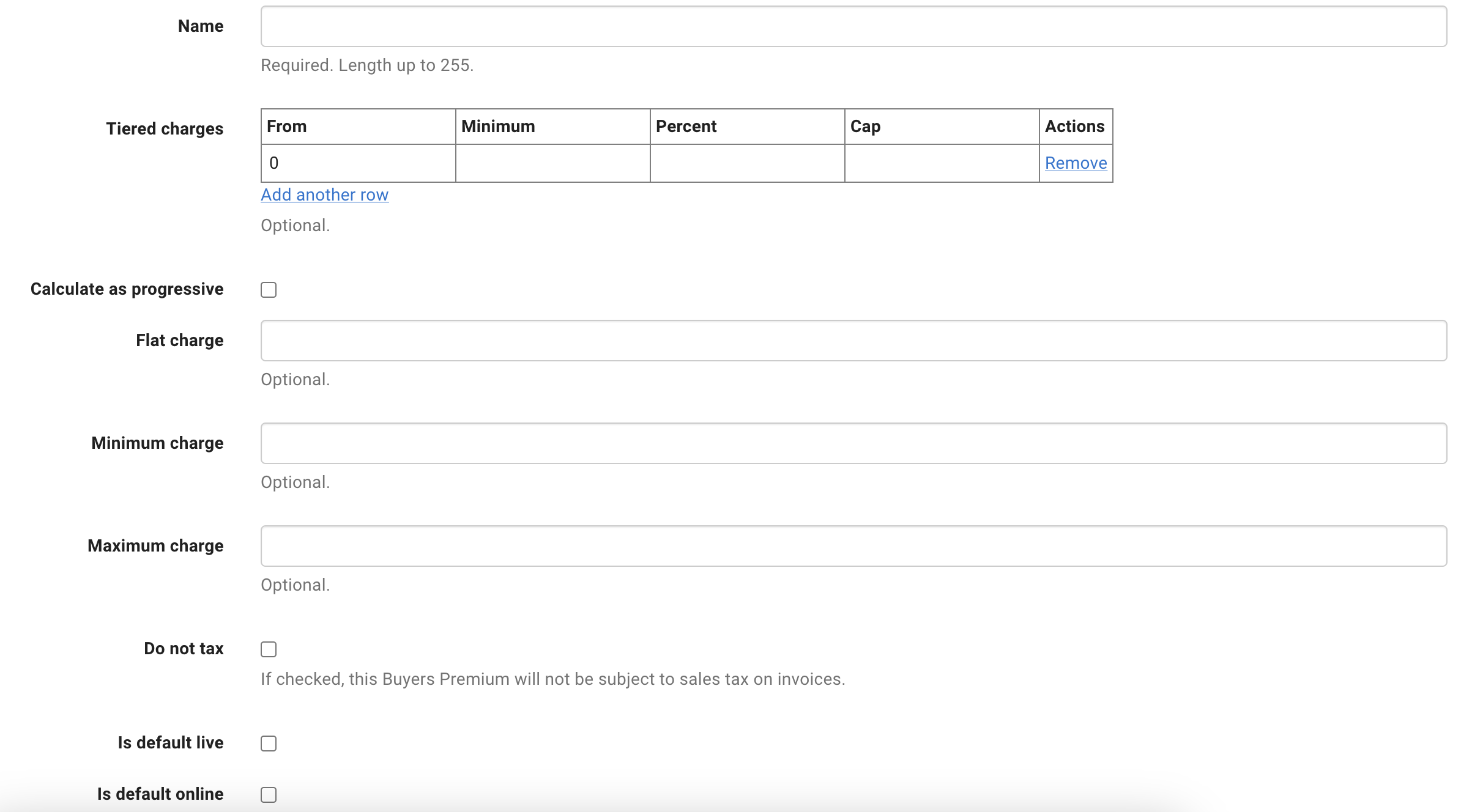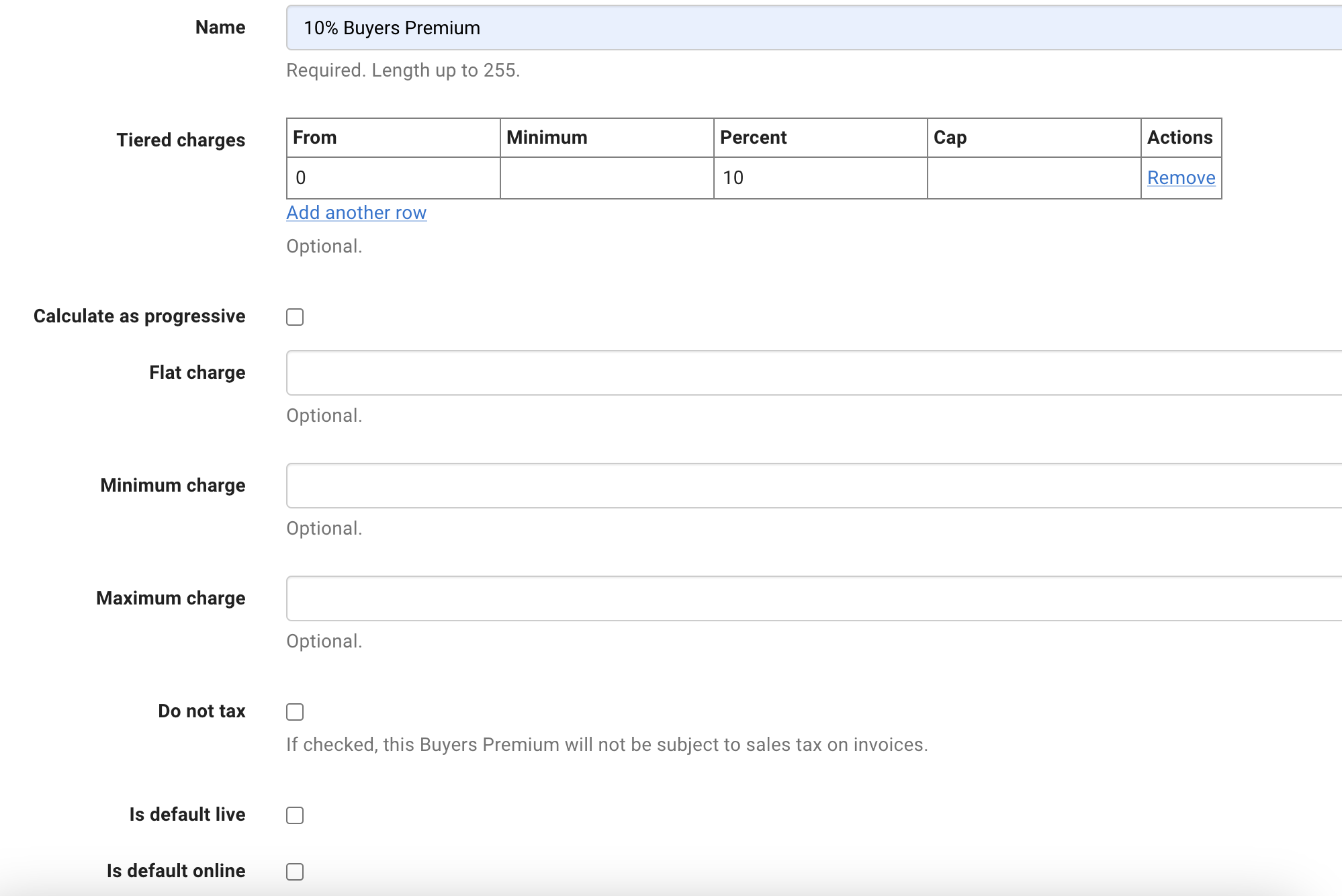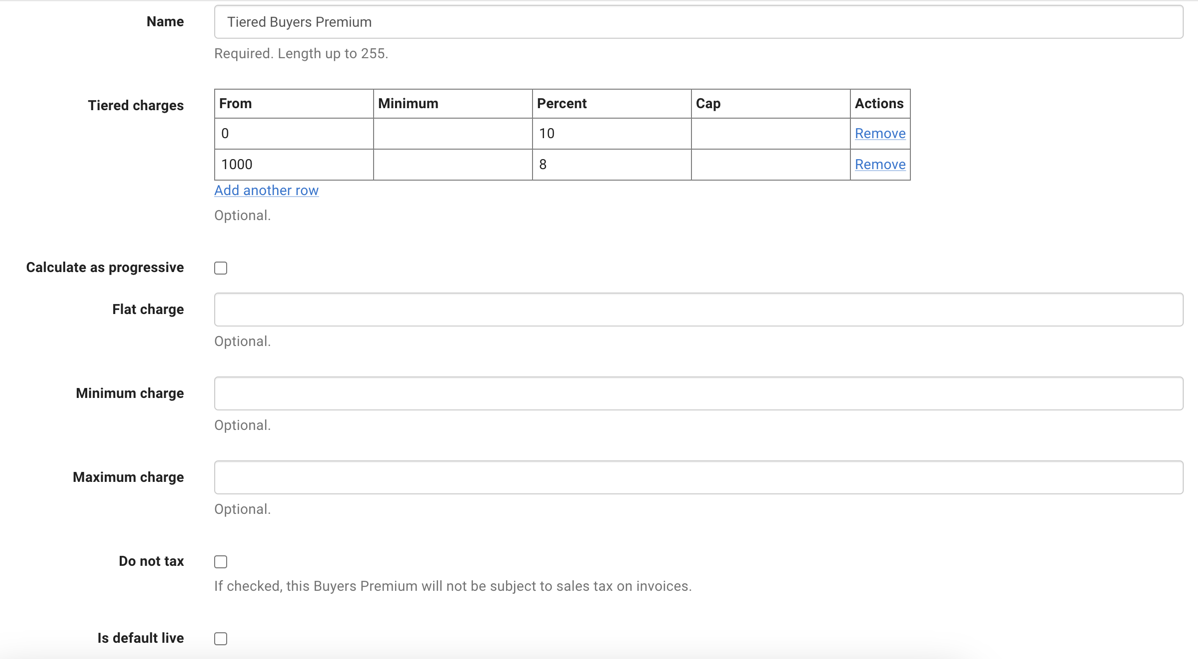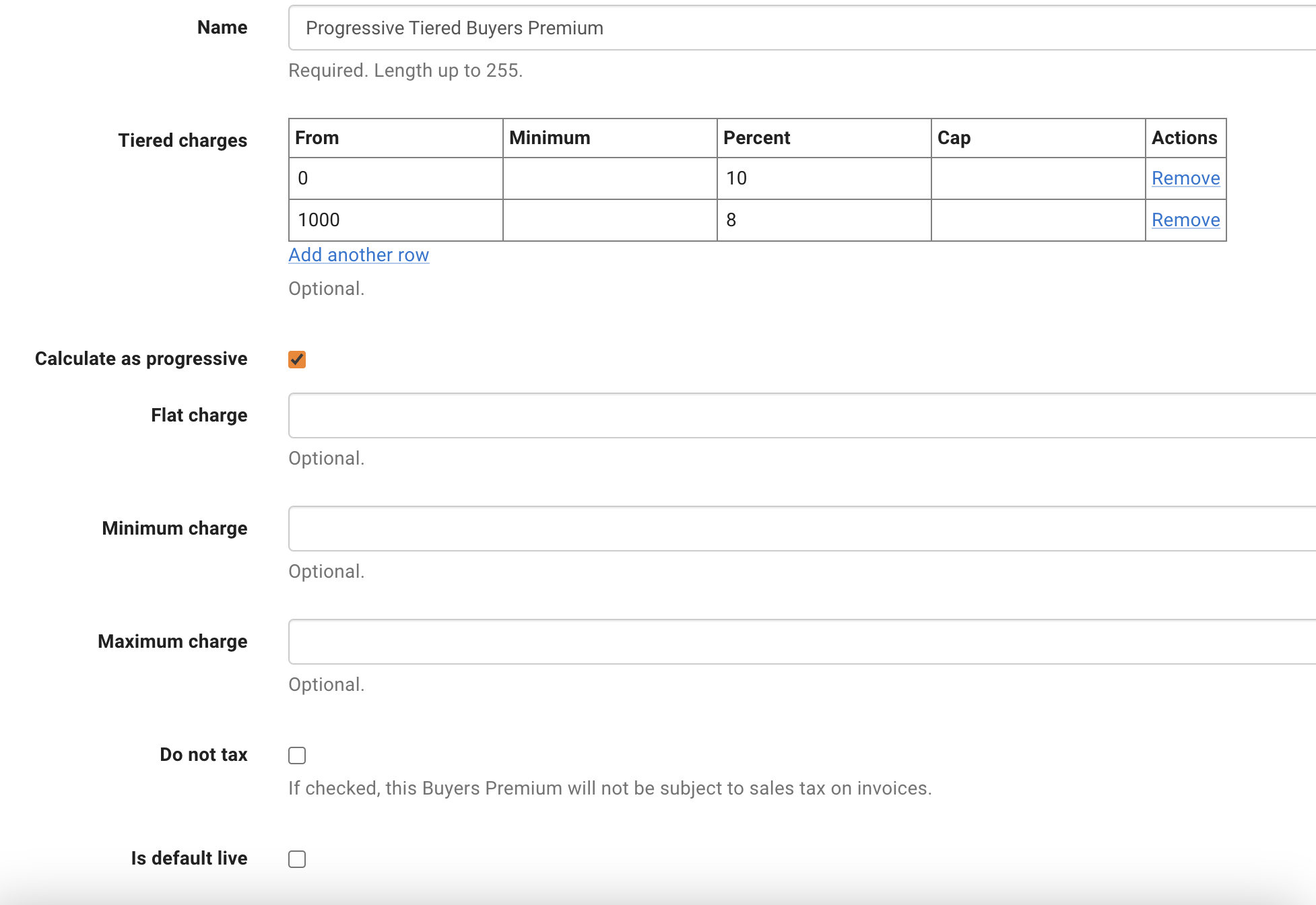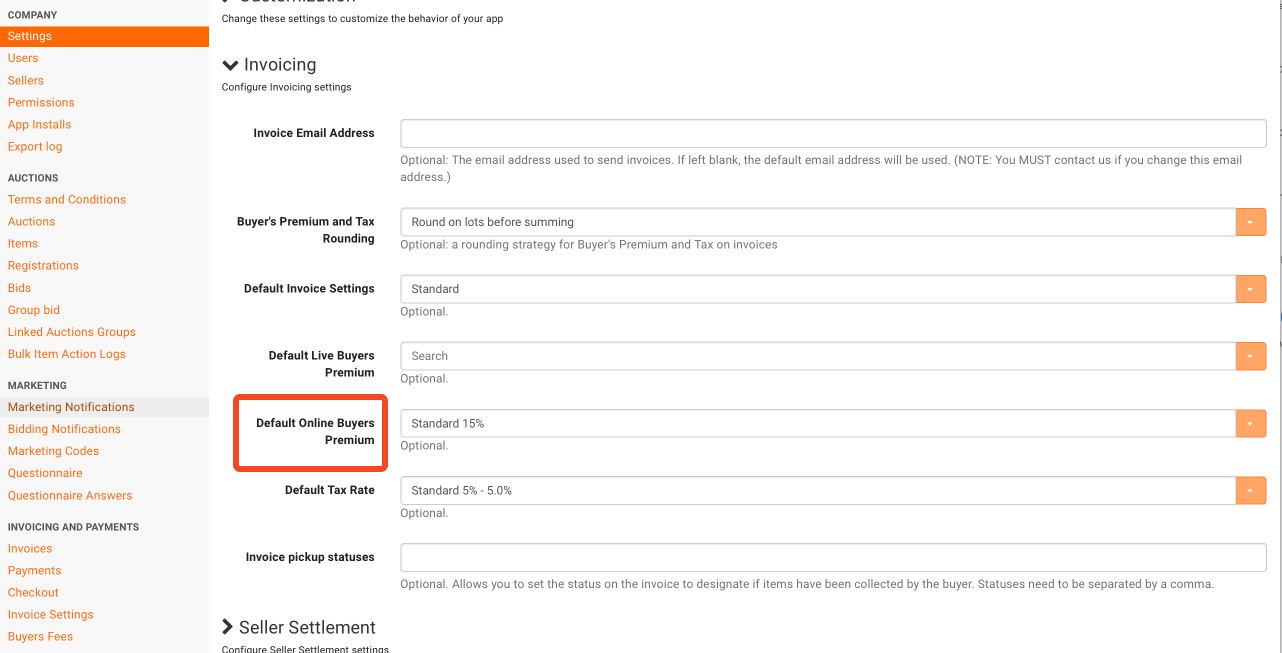Buyer's Premium Guide
NOTE: This article covers setting up ONLINE buyer's premiums. It is also possible to set up LIVE buyer's premiums using the same procedure. For more information on assigning live vs. online buyer's premiums, see this article.
BidWrangler allows you to set buyer's premiums for auctions. They can be set at the company, auction, and user level. The more specific setting is always applied — for example, a buyer's premium set for a user overrides one set for the company or auction. Likewise, a buyer's premium set for a particular auction overrides the premium set as company default.
Creating a buyer's premium
Before a buyer's premium can be applied, it must be created.
From your Admin Portal, click on "Buyers Premiums"
Click on "Create" to set up a new Buyer's Premium
You will find a variety of settings and fields for configuring your buyer's premium and include:
Name - Like most settings, name your buyer's premium in a way that is descriptive and easy to understand at a glance such as "10% Buyer's Premium" or "Default Tiered BP".
Tiered charges - This is where the percent amount will go even if it is a single percent applied and not tiered. See the examples in the next section below to better understand the various columns in this table.
"From" allows you to set the various tiers. The minimum, percent, and maximum for that row will be applied to lots sold between that amount and the next row if applicable.
"Minimum" will make sure the premium is at least that amount when the percent-only would have been lower.
"Percent" is the percent applied to the hammer price of an item in order to calculate the premium.
"Maximum" will ensure the premium doesn't exceed that amount.
Calculate as progressive - Enabling this will calculate the buyer's premium in tiered premiums differently. If a tiered buyer's premium is set up as 10% up to $1000 and 8% after that, then normally, a $1100 item's buyer's premium would place it in that second tier (8%) and equal $88. "Calculate as progressive" would apply the maximum amount of the item's sold price in the first tier, maximum amount in the second tier, and so on. This would mean a $1100 sold item would be (10% of $1000) $100 plus (8% of $100) $8 = $108.
Flat charge - A flat amount will be applied as part of the buyer's premium, regardless of any tiered charges.
Minimum charge - The total buyer's premium will be at least what is configured here.
Maximum charge - The total buyer's premium will be capped at this amount.
Do not tax - The buyer's premium not be taxed.
Is default live - If a buyer's premium is not assigned at the auction, item, or user field for an item won where the bid was placed live, this premium will be default.
Is default online - If a buyer's premium is not assigned at the auction, item, or user field for an item won where the bid was placed online, this premium will be default.
When you are done configuring the buyer's premium settings, click "Save". You are returned to a list of your buyer's premiums. Note that you can mark any of the buyer's premiums as default.
Examples of Buyer's Premiums
Let's go through a few different examples of buyer's premiums: A simple percent premium, tiered premium, and a progressive tiered premium
Single Percent Buyer's Premium
Many customers will set up a single percent that will be applied to all sold items, no matter how expensive they are. Below is a screenshot of how one would set up a 10% buyer's premium.
Tiered Buyer's Premium
Some customers apply different buyer's premiums based on how expensive the item is. The example below is if you wanted to charge an additional 10% for items sold no more than $1000, then 8% for anything more than $1000.
Progressive Tiered Buyer's Premium
The settings below are the same as the tiered example, except "Calculate as progressive" is enabled. This buyer's premium will result in a different number than a normal tiered premium, because an item's premium can be applied across multiple tiers.
For example, an item sold for $5000 using the settings below would calculate a buyer's premium as the following:
The first tier is 10% for items sold from $0-$1000, so the system will apply 10% to the first $1000 of the $5000 item, equating $100.
The second tier is 8% for items sold from $1001 and on with no other tiers following. This means that 8% would be applied to the remaining $4000, equating $320
Adding the two together would make the $5000 item's buyer's premium = $420
Applying the buyer's premium
There are a variety of ways to apply buyer's premiums to sold items in your auctions. Buyer's premiums can be added to the company, auction, item, and user level. You can additionally override an item's buyer's premium on any individual invoice.
Company Settings
You can choose a buyer's premium as default for your company by editing your company settings, scrolling down to Invoicing, and choosing a buyer's premium from the "Default Online Buyers Premium" dropdown.
Auction, Item, and User Settings
To establish a buyer's premium for a particular auction, item, or user, navigate to the appropriate edit screen and scroll down to the invoicing settings. Choose the appropriate setting from the "Online Buyers Premium" dropdown. This setting will override the default company setting.
If you have any issues or questions with buyer's premiums, please reach out to us at helpdesk@bidwrangler.com.

